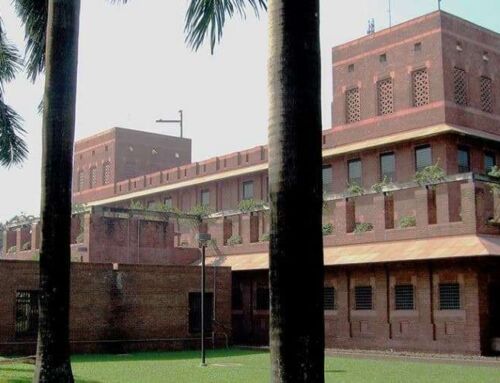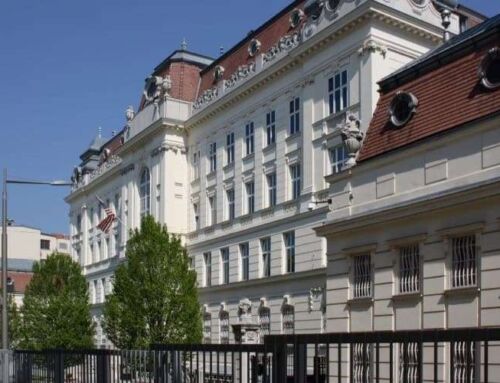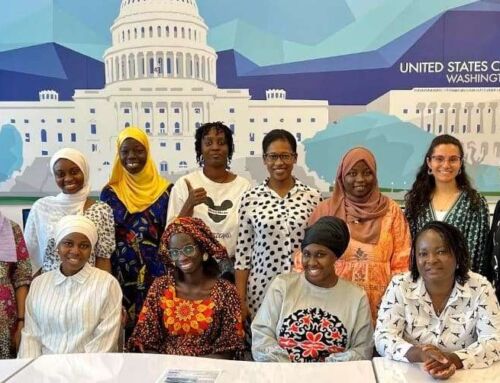By William Hagan
William Hagan joined the U.S. Department of State as a Foreign Service Information Management Specialist (IMS) in 2004, serving mainly in Africa and the Western Hemisphere. Since this article, the IMS role has evolved into the Diplomatic Technlogy Officer (DTO) role.
As a Diplomatic Technology Officer (DTO) at a two-person shop, where only two IT specialists were assigned to the Embassy in Africa, my responsibilities were numerous on any given day. Depending on the season, the location of the Embassy or number of IT staff, anything is possible.
For example, I was expected to fill the staffing gap, acting as the head of my section, when the Information Management Officer (IMO) was on leave. In addition, I was assigned to supervisory roles to manage local personnel working in the sections, such as the mailroom, telephone and radio, that are under the Information Management section.
My supervisor had overall management of the entire section. That meant that in his absence, I directly managed both the unclassified and classified information systems for the Embassy. In addition to these responsibilities, I was also expected to prepare and coordinate the Classified pouch (the primary secure option for embassies overseas to transport classified materials from Washington to post) delivery with the help of a cleared Courier, who is in charge of securing the items to be delivered to post.
These responsibilities could be overwhelming on any given day. But it’s even more so because an integral part of my job was to help support all the users in the Executive office, including the Ambassador, the Deputy Chief of Mission, the Political, Economic and other officers who work out of the controlled access location. My goal was to make sure that their computer systems and software programs were expertly installed to run with little or no disruptions at all times. Due to the location of these offices, I was the only cleared individual who could resolve any issues as an IT expert.
I had additional responsibilities of making sure that all the equipment and software programs in the Chief of Mission’s residence were also well maintained. These included WIFI connections, managing the computer workstations, ensuring the two-way radio communications were tested every week, the cellphones were updated with the approved apps to access official programs, satellite phones were tested frequently, and cable and Satellite Televisions were in good working condition. Regular testing and monitoring were required because this was the alternate site that could be used as a contingency, in case of an emergency. Therefore, all communication equipment was set up to mirror what was in the Embassy.
In addition to these responsibilities, there were always on-going IT projects that required my attention. Most of these projects required the collaboration of stateside subject matter experts (to include contractors) who could walk me through the process remotely. For example, through their instructions, and coordination with the Facilities section (the section that is responsible for installing and managing all Embassy electrical systems, generators and maintaining the Embassy grounds) I learned how to install a Climate control monitoring station.
Coordinating with the General Services Officer (GSO), I also learned how to run conduits and cabling to setup up “safe driver” monitoring equipment called “DriveCam,” approved for use in each Embassy vehicle to track the driver’s movements and provide valuable information for accident reports to improve vehicle safety.
I also took the lead in coordinating with the Public Affairs section in using their public library computers to prepare for the popular Foreign Service Officers Test (FSOT), which is held several times a year and is open to the public at our embassy. My participation in these activities underscored the need to realize just how varied, demanding, and yet enlightening, a DTO position can be on a daily basis.
Local employee turnover was quite high at Post, as employees in lower grades often applied and were accepted for higher-grade positions in other agencies or in other sections of the Embassy. I worked with the Human Resources Department and supervisors on several occasions to revise position descriptions for new hires, coordinate with the interview panels, including those from other agencies, and interview applicants for these new positions.
My personnel management responsibilities included completing several HR forms required in preparation for the annual local employee evaluations for those that I supervised. These evaluations were mandatory and critical for processing their annual grade increases. I learned a lot from this process and I know I will be able to use that knowledge in another assignment.
One of the most challenging requirements was to consistently check invoices that were related to IT equipment to make sure that all bills related to those items (i.e. WIFI and Cable Television expenses at the designated alternate site) were carefully reviewed and had been paid on time. The absence of payment can result in a cancellation of services, putting the mission at risk.
It is important to note that as much as the DTO job requires strong technical skills, it also requires stronger interpersonal, communication, intellectual and management skills. These skills come in handy when one is expected to perform in other aspects of the assignment, such as supervisory and administrative functions. The DTO must be able to learn how to collaborate with other offices and agencies to get the job done to keep the Embassy functioning effectively. This is the part of the job that I found to be the most challenging, but also the most exciting.






